 |
| June 28, 2016 | Volume 12 Issue 24 |
Designfax weekly eMagazine
Archives
Partners
Manufacturing Center
Product Spotlight
Modern Applications News
Metalworking Ideas For
Today's Job Shops
Tooling and Production
Strategies for large
metalworking plants
Wheels:
GM gives insider look at Camaro 10-speed automatic transmission
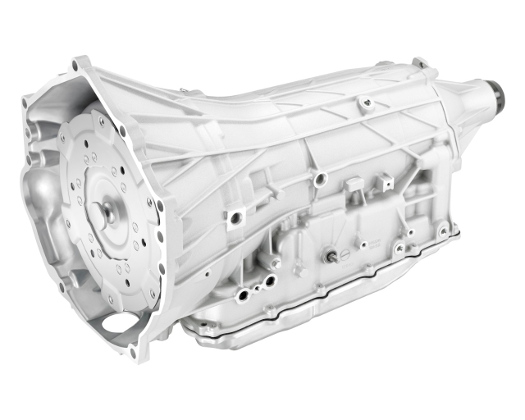
The all-new Chevrolet Camaro ZL1 10-speed automatic transmission is the first 10-speed automatic for a volume production car. [All images courtesy: General Motors Co.]
Engineers who developed the new 10-speed automatic transmission available in the 2017 Chevrolet Camaro ZL1 built on the experience of previous, critically acclaimed Hydra-Matic multispeed transmissions to push its performance, refinement, and efficiency advantages to a new threshold.

The 10-speed is an all-new design -- and the first-ever application in a car -- with a wider, 7.39 overall gear ratio spread that enables the ZL1's supercharged engine to remain at optimal engine speeds during upshifts.
"With world-class shift times on par with the world's best dual-clutch transmissions and the refinement that comes only from a true automatic, the 10-speed delivers incomparable performance on and off the track," said Dan Nicholson, vice-president, GM Global Propulsion Systems. "It also leverages the experience of our other multispeed transmissions to deliver that performance with greater efficiency as its use expands into other vehicles."
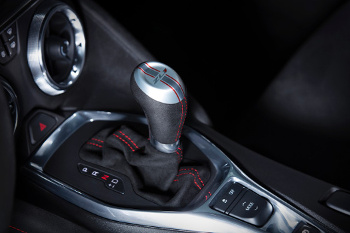
The driver-focused interior of the Camaro ZL1 features standard Recaro front seats, along with a sueded flat-bottom steering wheel and shift knob. Chevrolet's Performance Data Recorder is available and allows drivers to record, share, and analyze driving experiences on and off the track.
And while the Camaro ZL1 will be the first GM vehicle to offer the new 10-speed automatic, designed for rear-wheel-drive applications, it will be available in eight additional vehicles by 2018.
Additional transmission highlights:
- Creatively designed packaging. The 10-speed is approximately the same size as the six- and eight-speed transmissions, minimizing changes to vehicle interfaces.
- Quicker shifts than a dual-clutch transmission. Testing has shown faster upshift times than the Porsche PDK dual-clutch transmission. In fact, the 1-2 upshift is 36 percent quicker than the PDK, while the 2-3 and 3-4 upshifts are 27 percent and 26 percent quicker, respectively.
- Reduced spin losses. Thanks to only two non-applied clutches -- the same number as the eight-speed transmission -- as well as other design features, the 10-speed automatic has lower friction that contributes to greater fuel efficiency over GM's six- and eight-speed automatics. New ultra-low viscosity transmission fluid also reduces friction, while an internal thermal bypass allows the transmission to warm up faster -- attributes that enhance fuel efficiency.
- GM-developed controller. It is the latest transmission to use an all-new, GM-developed control system, with performance calibrations tailored specifically for different vehicles.
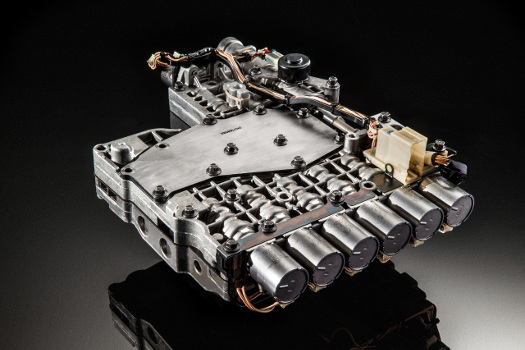
The electrohydraulic valve body assembly contributes to quick shift times.
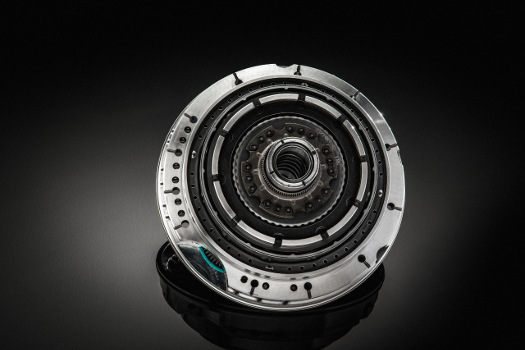
The front support assembly with its clutch spinloss reduction features, among other things, contributes to the overall efficiency and compact size of the new 10-speed automatic transmission.
A look at architectural features and packaging
Thousands of hours of CAD analyses were made during the development of the Hydra-Matic 10-speed transmission, driving a comparatively compact design envelope comparable to the eight-speed automatic.
A one-piece aluminum case with an integral bell housing helps reduce weight and enhance powertrain stiffness, while a unique 260-mm integral turbine clutch torque converter design reduces complexity and helps make the converter thinner, which contributes to the transmission's packaging.
The 10-speed has four simple gearsets and six clutches: two brake clutches and four rotating clutches. That's only one more clutch than the eight-speed, despite having two more forward gears, contributing further to the compact packaging, while also improving spin losses to enhance fuel efficiency.
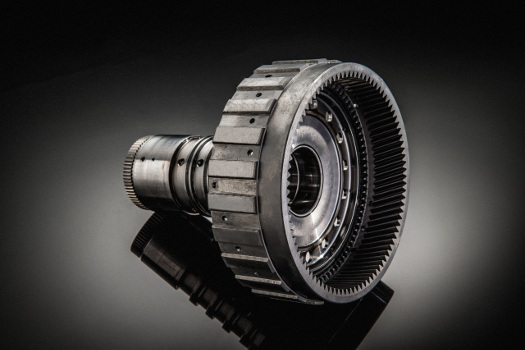
The durable input ring gear and overdrive sun gear assembly.
A unique triple-clutch assembly in the middle of the 10-speed's architecture is a primary enabler for packaging 10-speed content in the same space as GM's six- and eight-speed transmissions.
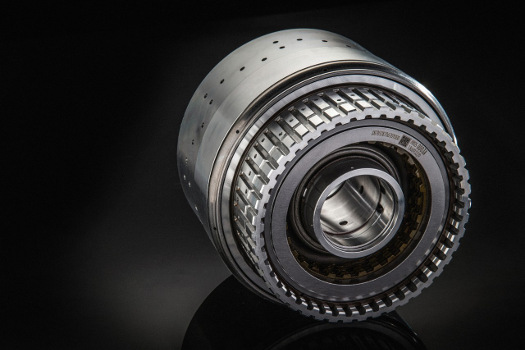
The triple clutch assembly design.
The 10-speed also features a variable-displacement vane pump, which optimizes transmission fluid pressure, based on speed and load, to enhance efficiency.
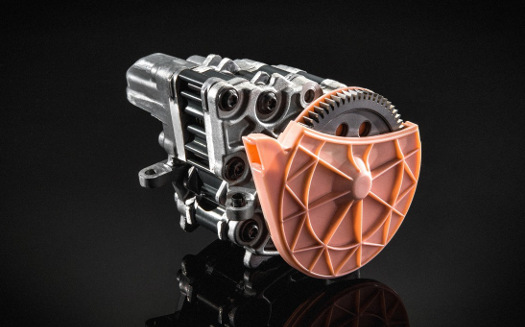
The variable displacement vane pump helps improve the overall efficiency.
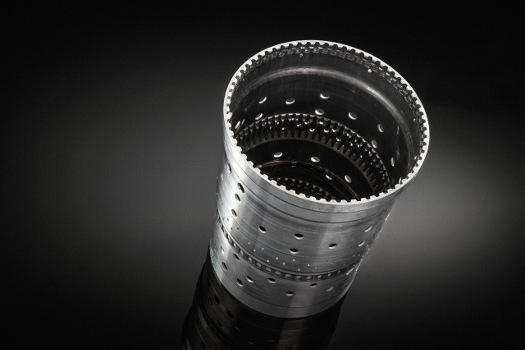
The output ring gear and reaction carrier shell design contribute to the transmission's compact size.
7.39 ratio spread and faster upshifts
The new 10-speed's greater overall performance and efficiency are due primarily to its wider 7.39 overall gear ratio spread, which enhances off-the-line performance with a more aggressive first-gear ratio than GM's eight-speed automatic. Smaller steps between the gears also help the engine maintain the optimal speed for maximum power at almost all speeds, especially when exiting a corner on a track.
Adaptive shift controls such as Performance Algorithm Shifting and Driver Shift Control enhance performance driving. Performance Algorithm Shifting (PAS) monitors how assertively the driver is using engine output to determine at what engine speed to upshift or downshift. Driver Shift Control allows the driver to shift the transmission via the steering wheel-mounted paddle shifters. Electronic safeguards prevent over-revving if the wrong gear position is selected, but they rely on the driver to make upshifts or downshifts.
Gear changes are mainly executed with clutch-to-clutch action, where an "on-coming" clutch is engaged and an "off-going" clutch is released in a precise manner to achieve the ratio change. Certain key shifts, however, are made with a freewheeling action, such as 3-1 downshifts, where a plate clutch is actively disengaged while a mechanical freewheeler clutch automatically engages with optimum synchronization.
The torque converter is 260 mm in diameter and features a lock-up clutch. It also uses electronic-controlled capacity clutch (ECCC) technology, which employs a small, regulated amount of slip to dampen out engine pulses for a smoother running drivetrain, especially during shifting.
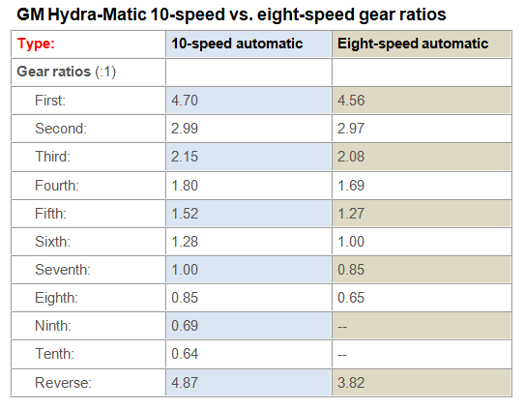
Reduced spin losses and new transmission fluid
Friction-reducing design features, including all-new ultra-low viscosity transmission fluid, internal thermal bypass, minimal number of non-applied clutches, and other lower mechanical spin losses, contribute to the 10-speed's effect on improved vehicle efficiency.
The low-viscosity fluid helps reduce friction across the full temperature operating range, which enhances fuel efficiency. Additionally, the internal thermal bypass allows the transmission to warm up faster to its optimal operating temperature, further contributing to fuel efficiency.
GM control system
The shift-time quickness and responsiveness are accomplished by leveraging the base transmission hardware in concert with GM exclusively developed algorithms, software, and calibrations. An externally mounted electronic control module executes millions of controls instructions every second.
Source: General Motors Co.
Published June 2016
Rate this article
View our terms of use and privacy policy
